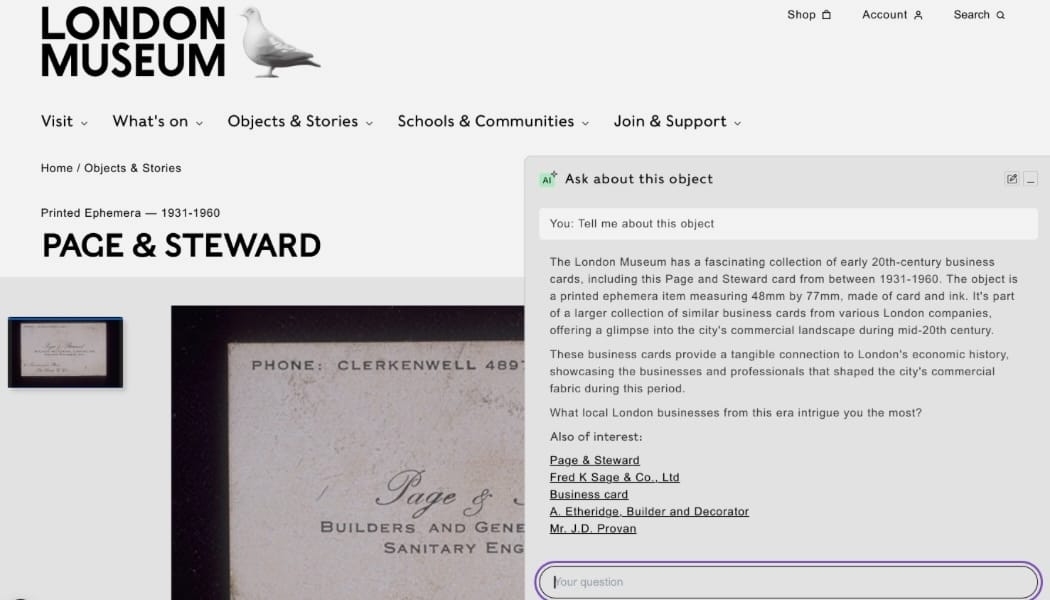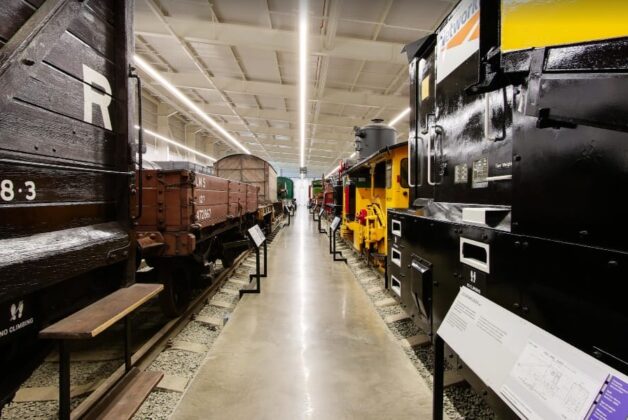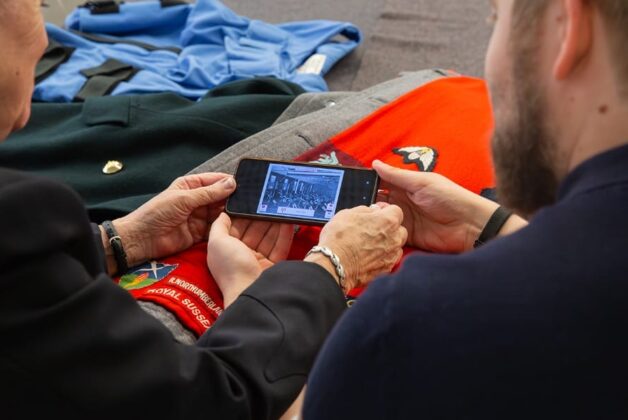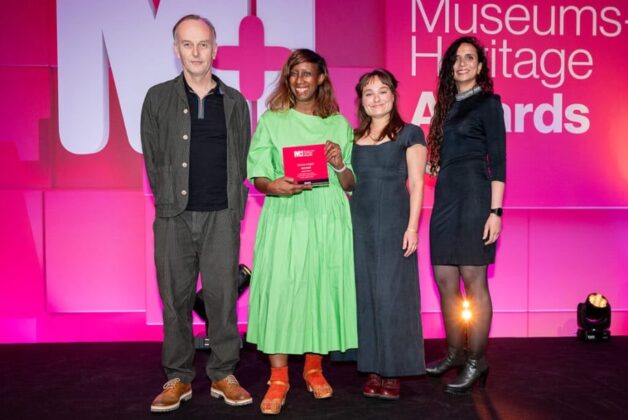Image: The chatbot appears on the right of most museum webpages (London Museum)
Museum’s chatbot experiment uses natural language processing to engage audiences differently with collections content and stories.
London Museum has launched a new AI chatbot which will answer questions about its collections.
‘Clio 1.0’ has been described as an experiment, to see how audiences engage differently with museum content.
Visitors to the website will see chat pop-up appear on all of its collections object pages, as well as the museum’s published stories and blogs.
The chatbot was created by the museum alongside digital agencies, and uses AI, and more specifically natural language processing, to answer questions.
A blogpost announced the museum’s Head of Digital Innovation Trish Thomas said Clio has been trained on only data from ‘London Museum’s trusted data’, not information from the wider internet.
Thomas described Clio 1.0 as “an experiment to see how audiences might engage differently with our content and collections.”
Users of the new tool can expect answers to differ from one user to the next, as it takes into account the entire conversation.
It is expected that the conversation will include summarised facts in natural language, which means that dates, titles or materials might be “simplified or rounded”.
On its further development, Thomas explained: “we’re training Clio 1.0 to use appropriate language terms based on inclusive standards, but we’re aware that offensive language and outdated terminology exist in our older records.
As a result, it may occasionally surface terms we no longer find acceptable. Moving forwards, we aim to standardise our language, making conscious choices about the terms we will and won’t use.”
The technology is built on models created by AI technology giants OpenAI and Anthropic.
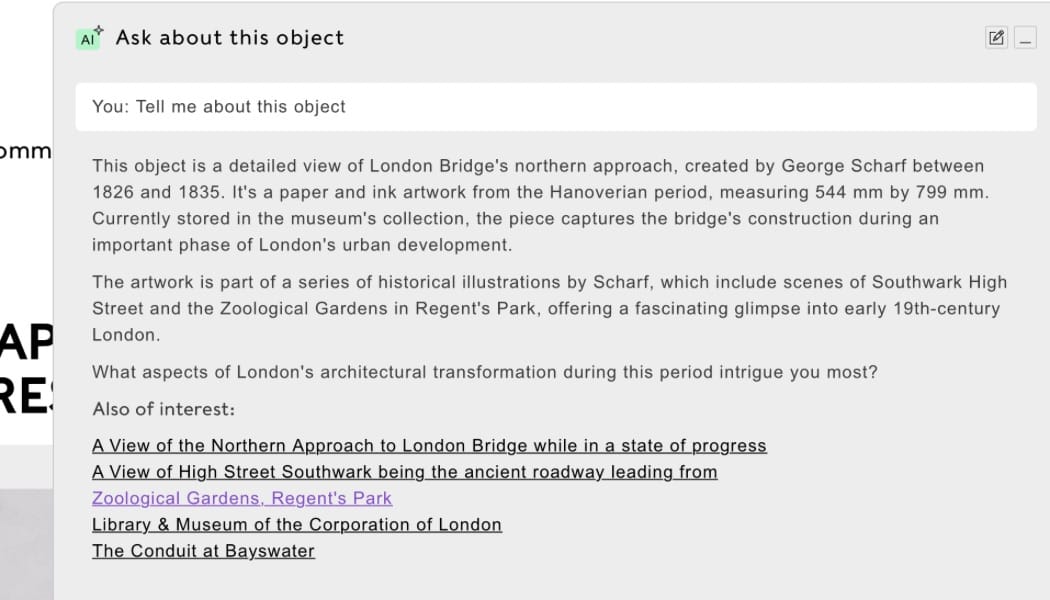
On its limitations, Thomas writes: “If you ask [Clio] an existential question like: “what’s the point in museums?” then it’s likely to give you an existential answer! You can interpret this as you choose, but it won’t necessarily represent the views of London Museum. The same applies if you ask it a subjective question like “what’s the best object in the collection?”.
“The quality of the chat will get better over time and with more usage, as AI technology improves daily and as we continue to train it based on user interaction,” said Thomas.
Energy concerns
Thomas said the museum’s policy is to prioritise AI solutions that “minimise energy consumption and environmental impact, contributing to our wider sustainability goals.
Because the AI has been trained on a relatively small data-set, Thomas sad there are already fewer emissions upfront than a more generalised AI chatbot.
The technology is currently only trained to answer in English, and does not create or provide images, which is typically more demanding of computing power, and therefore energy usage.
Thomas said 500-1000 messages to Clio 1.0 is roughly equal in energy to boiling one kettle of water.
The museum is currently closed as part of a move to its new home at West Smithfield, where it is scheduled to reopen next year.

